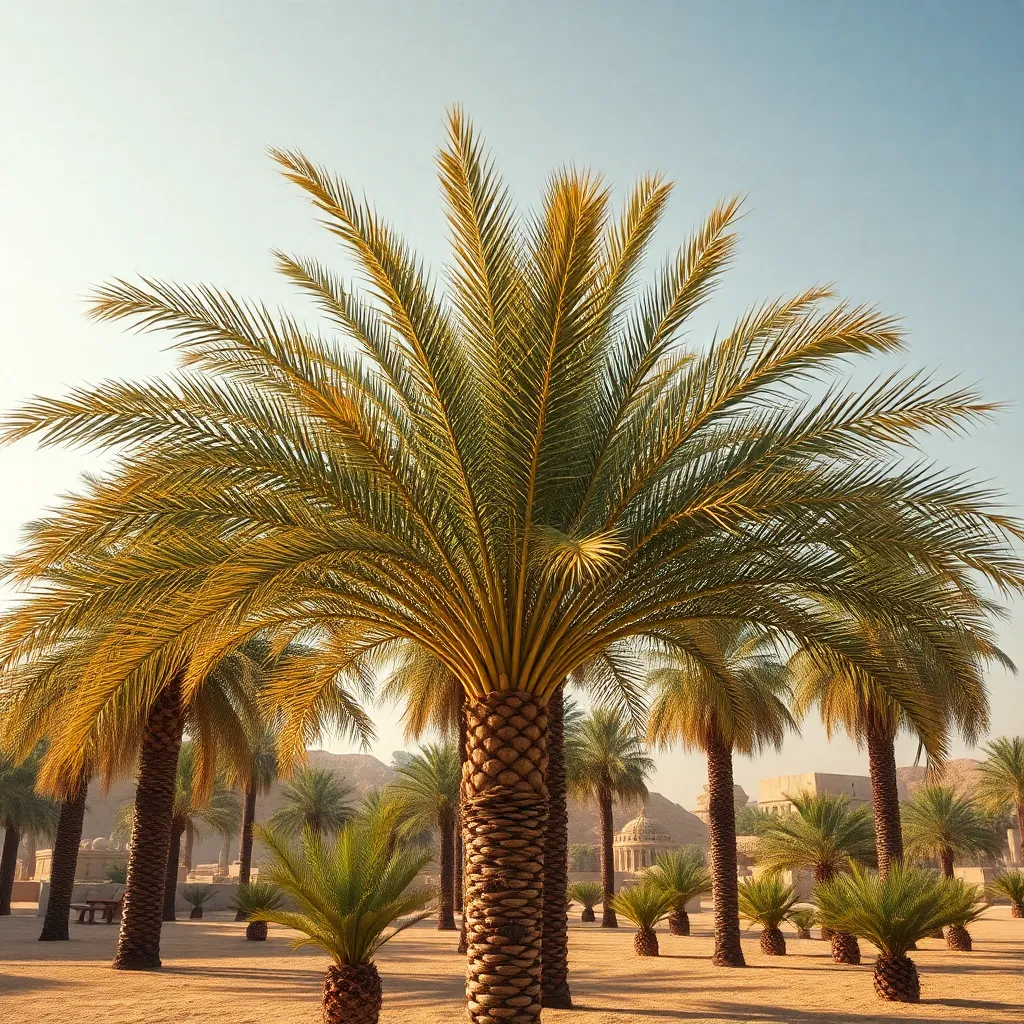The Cultural Importance of the Date Palm in Egypt
I. Introduction
The date palm, scientifically known as Phoenix dactylifera, holds a place of profound significance in Egyptian culture and history. This remarkable tree has been a staple of Egyptian life for thousands of years, symbolizing prosperity, fertility, and endurance. The significance of the date palm extends beyond mere agriculture; it intertwines with the very fabric of Egyptian identity, mythology, and tradition.
Historically, the date palm has been cultivated in Egypt since ancient times, thriving in the arid climate of the Nile Valley. The purpose of this article is to explore the multifaceted importance of the date palm in Egyptian society, examining its historical significance, economic impact, nutritional benefits, cultural symbolism, and modern-day relevance.
II. Historical Significance
A. Ancient cultivation practices in Egypt
Evidence of date palm cultivation dates back to ancient Egypt, where it was not only a source of food but also a crucial component of the agricultural economy. The Egyptians developed advanced irrigation techniques to cultivate date palms, taking advantage of the annual flooding of the Nile River. This practice allowed them to grow dates in otherwise inhospitable desert conditions.
B. Role in Egyptian mythology and religion
The date palm also holds a sacred place in Egyptian mythology. It was often associated with various deities, such as Osiris and Isis, symbolizing life, growth, and the afterlife. The tree’s tall stature and ability to thrive in harsh environments made it a powerful metaphor for resilience and rebirth.
C. Historical uses and symbolism of the date palm
Throughout history, the date palm has served multiple purposes, including:
- Source of food: Dates were a staple food, providing essential nutrients.
- Construction material: The wood and leaves of the date palm were used to build homes and furniture.
- Religious offerings: Dates were often used in offerings to gods and during funerary rites.
III. Economic Importance
A. Date palm cultivation and agricultural practices
Date palms are integral to Egypt’s agricultural landscape, particularly in regions like Aswan and Luxor. The cultivation of dates involves traditional practices that have been passed down through generations, including pollination and harvesting techniques that maximize yield.
B. Contribution to local and national economies
The date palm industry contributes significantly to both local and national economies. It provides livelihoods for many rural families and supports local markets. Egypt is among the top producers of dates globally, exporting a significant portion of its harvest to various countries.
C. Trade routes and the date palm’s role in commerce
Historically, the date palm was a key product in trade routes across the Middle East and North Africa. Its versatility allowed it to be traded not just as a food item but also as a raw material for various crafts, further embedding it in the economic fabric of ancient Egypt.
IV. Nutritional and Health Benefits
A. Nutritional value of dates
Dates are packed with essential nutrients, including:
- High in fiber, aiding digestion
- Rich in vitamins and minerals such as potassium, magnesium, and vitamin B6
- Natural sugars that provide a quick energy boost
B. Traditional uses in Egyptian medicine
In traditional Egyptian medicine, dates are believed to have various health benefits, including:
- Boosting energy levels
- Supporting heart health
- Improving digestive health
C. Impact on dietary practices in Egyptian culture
Dates are an integral part of Egyptian cuisine, often enjoyed fresh or dried. They are commonly used in sweets, desserts, and traditional dishes, reflecting their cultural significance and nutritional value.
V. Social and Cultural Symbolism
A. The date palm in Egyptian art and literature
The date palm appears frequently in ancient Egyptian art and literature, symbolizing fertility and abundance. It is often depicted in tomb paintings and hieroglyphics, signifying its importance in both life and the afterlife.
B. Use in celebrations and rituals
In modern Egypt, the date palm continues to play a vital role in celebrations, particularly during the holy month of Ramadan, where dates are traditionally consumed to break the fast. This practice emphasizes the tree’s symbol of nourishment and community.
C. Symbol of hospitality and generosity
In Egyptian culture, offering dates to guests is a gesture of hospitality and generosity, reinforcing the social bonds within communities.
VI. Environmental Considerations
A. Date palm’s role in desert ecology
Date palms are crucial to the desert ecosystem, providing shade and habitat for various species. Their deep roots help prevent soil erosion, making them vital in arid regions.
B. Sustainable farming practices and conservation efforts
Efforts are underway to promote sustainable farming practices among date palm cultivators, ensuring the preservation of this vital resource while maintaining ecological balance.
C. Challenges facing date palm cultivation in modern Egypt
Modern challenges such as climate change, water scarcity, and urbanization threaten date palm cultivation. Addressing these issues is essential for the future of this cultural symbol.
VII. Modern-Day Relevance
A. Contemporary uses of dates in Egyptian cuisine
Today, dates are enjoyed in a variety of dishes, from traditional sweets like Basbousa to modern energy bars, showcasing their versatility and nutritional benefits.
B. The revival of traditional cultivation methods
There is a growing movement to revive traditional cultivation methods, emphasizing organic practices that respect the environment while enhancing the quality and flavor of the dates produced.
C. The date palm’s place in Egypt’s cultural identity today
The date palm remains a potent symbol of Egyptian identity, representing resilience, sustenance, and a connection to the land and history.
VIII. Conclusion
In conclusion, the date palm is not merely a tree in Egypt; it is a multifaceted symbol of cultural heritage, economic importance, and nutritional value. Its historical roots run deep in Egyptian society, reflecting the resilience and adaptability of the people. As we move forward, it is essential to appreciate and preserve the date palm, ensuring that its legacy continues to thrive in the heart of Egypt.




